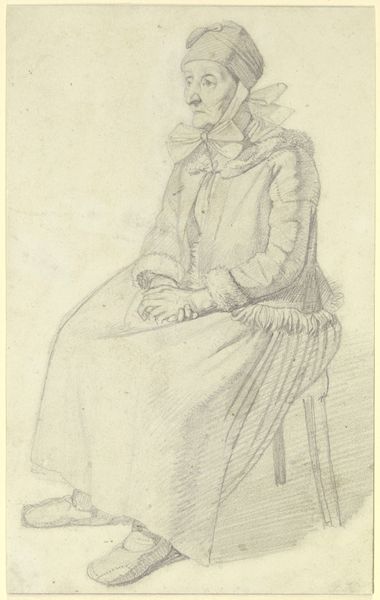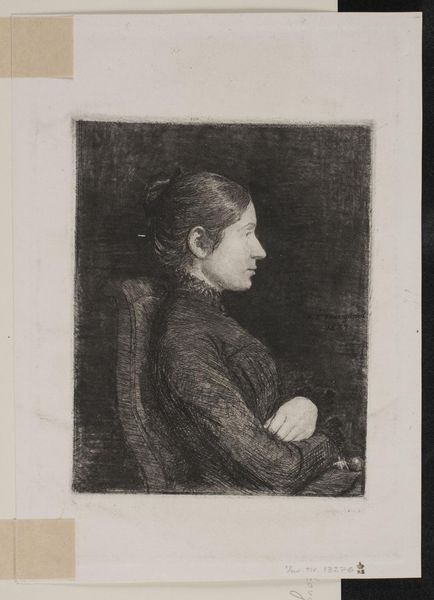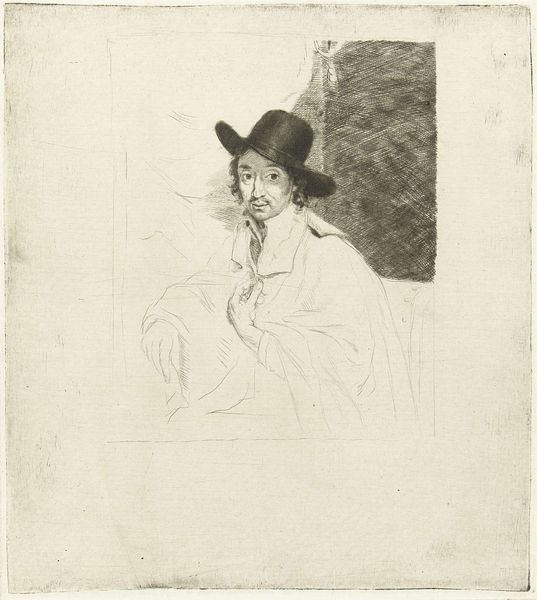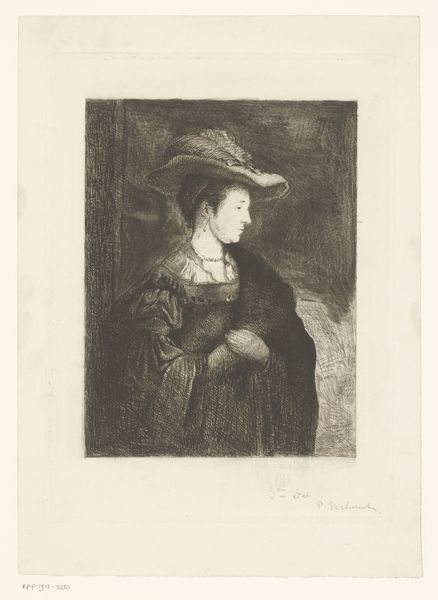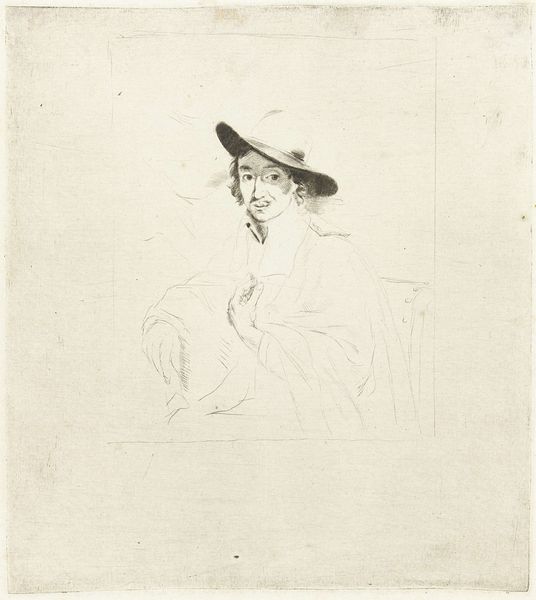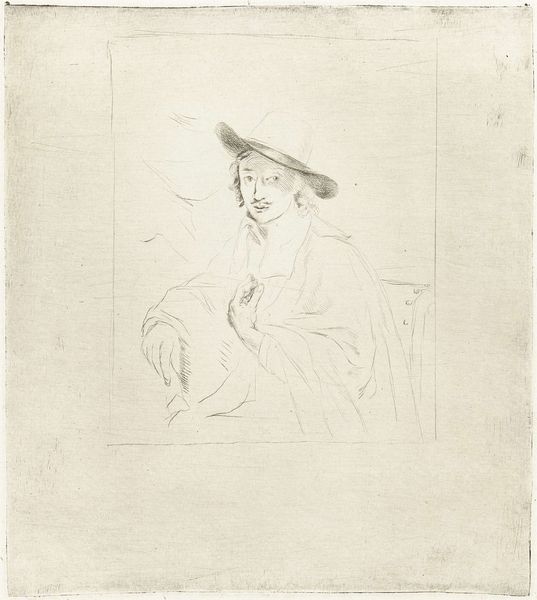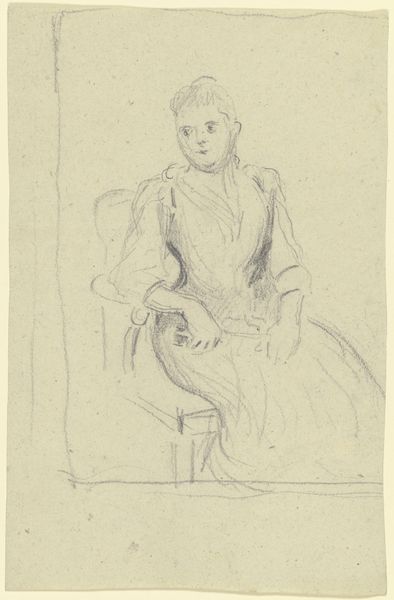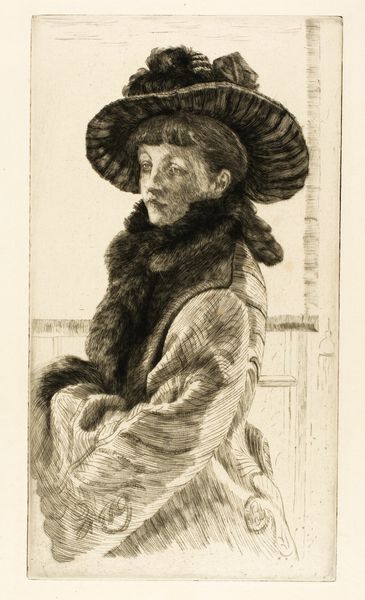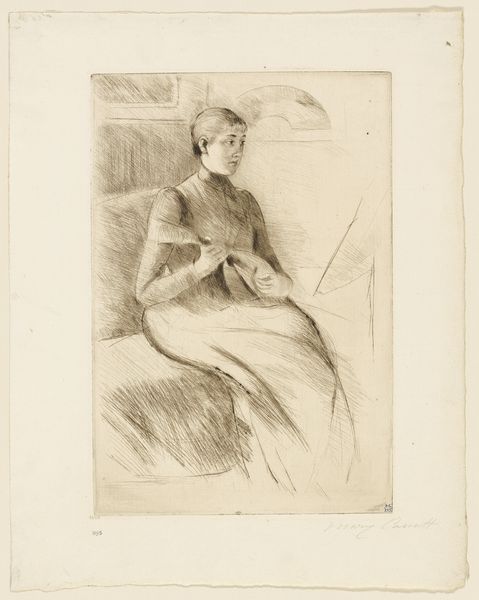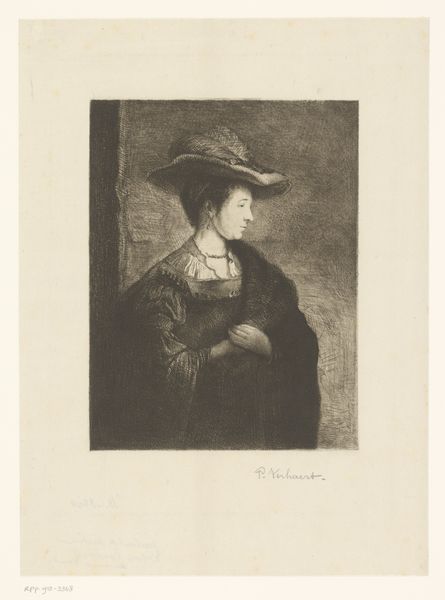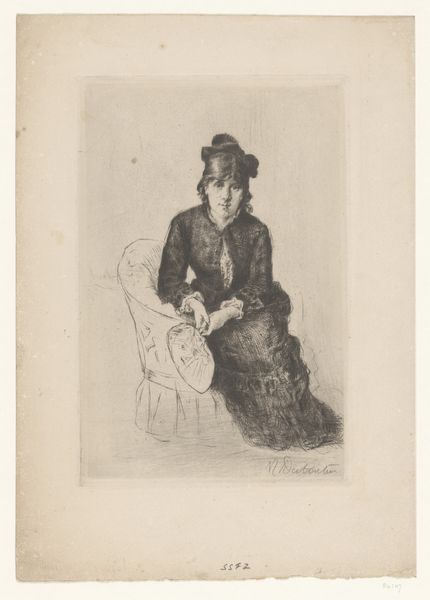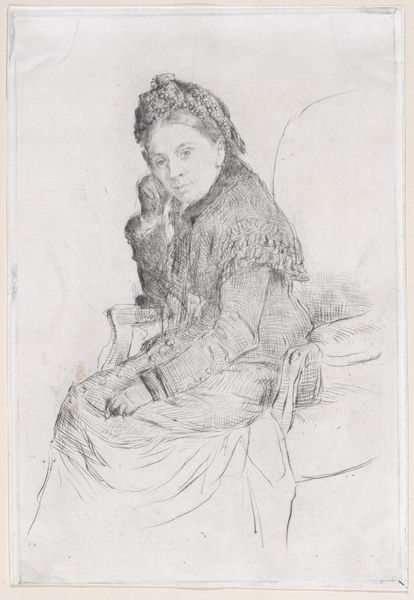
drawing, print, etching, paper
#
portrait
#
pencil drawn
#
drawing
# print
#
impressionism
#
etching
#
paper
#
men
#
united-states
#
portrait drawing
Dimensions: 260 × 177 mm (image/plate); 310 × 239 mm (sheet)
Copyright: Public Domain
Editor: Here we have Mary Cassatt’s "Reflection," an etching and drypoint print from around 1890. The subject, a woman seated in a chair, has a somewhat withdrawn air about her. How do you interpret this work, particularly in relation to the artist’s broader practice? Curator: Cassatt, as a female Impressionist, occupies a unique position. How does this seemingly simple portrait challenge conventional representations of women in art during this period, particularly within the male-dominated art world? Editor: That's a great point. While seemingly a straightforward portrait, I suppose it diverges from traditional depictions. Can you elaborate on the possible nuances that set it apart? Curator: Consider the woman’s direct gaze. It engages us, doesn’t it? Think about how male artists often depicted women as passive objects of desire. Cassatt offers agency and introspection to her female subjects, pushing against that paradigm. How do you feel this subverts the male gaze and empowers the female subject? Editor: I see what you mean. The direct gaze certainly seems like an active choice, and a subtle but important statement for the time. Were there specific influences from feminist thinkers that affected Cassatt’s creative direction? Curator: Although not explicitly documented, Cassatt’s choice to depict women in everyday scenarios and private moments reflects growing feminist concerns about female representation. Looking closely, how does Cassatt use the domestic setting – the seemingly quiet moment – to examine a woman’s internal life? Editor: I hadn’t considered that connection so overtly before. The private moment almost feels… political. Curator: Precisely! Cassatt elevates these mundane experiences. She prompts us to rethink the significance of women’s lives beyond societal expectations. So, looking at it again, does this change your initial understanding of the artwork? Editor: Absolutely. I now see it as a subtle but powerful commentary on female identity and the constraints women faced, disguised within an intimate portrayal. Thank you! Curator: And I now understand that appreciating such work can inspire more contemporary artists who also seek visibility and opportunity.
Comments
No comments
Be the first to comment and join the conversation on the ultimate creative platform.
